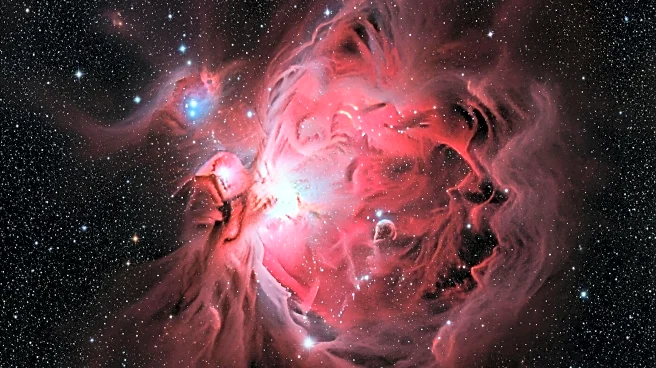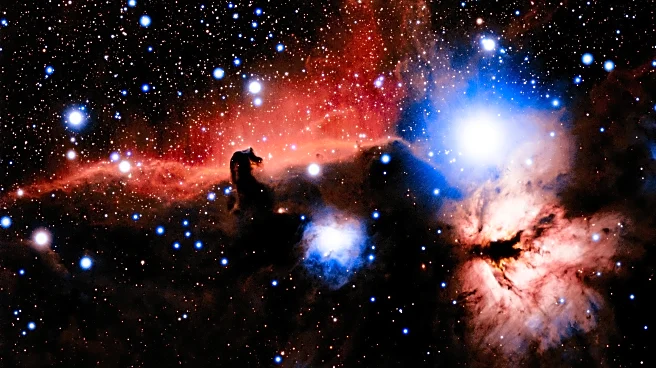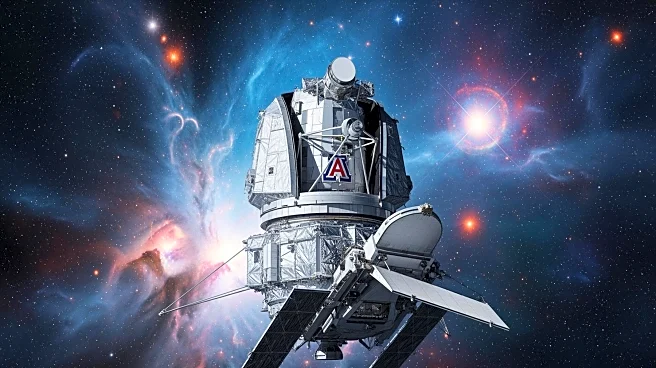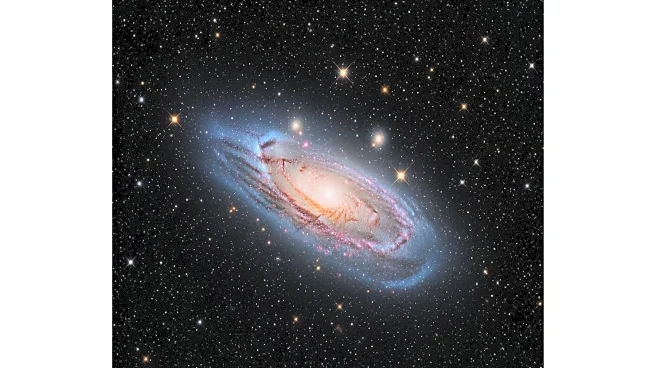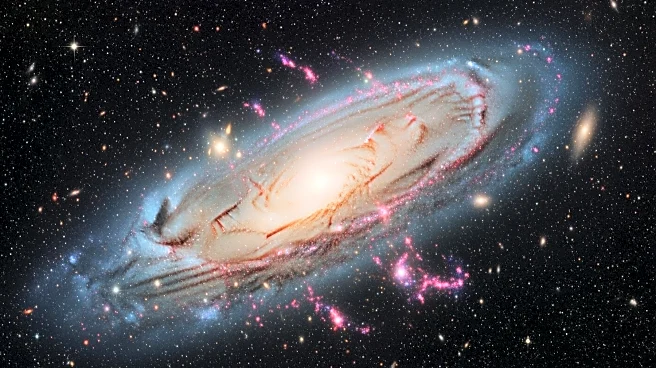What's Happening?
The James Webb Space Telescope has provided new insights into the Red Spider Nebula, officially known as NGC 6537, revealing unprecedented details of its structure. The nebula, classified as a planetary
nebula, is formed during the dying stages of stars similar to our Sun. As these stars exhaust their fuel, they expand into red giants and eventually shed their outer layers, exposing their cores. The ultraviolet radiation from these cores causes the ejected material to glow, creating the luminous structures observed. Webb's Near Infrared Camera has captured the central star of the nebula, which appears red and is surrounded by a cloud of hot dust. This dust likely forms a disc around the star, visible only in infrared wavelengths. The observations suggest the presence of a hidden companion star, which may be influencing the nebula's distinctive hourglass shape.
Why It's Important?
The discovery of a hidden companion star in the Red Spider Nebula is significant for understanding the final stages of stellar evolution. The nebula's hourglass shape, similar to other planetary nebulae like the Butterfly Nebula, indicates the role of binary systems in shaping these structures. The presence of fast-moving jets of ionized iron, which create rippling patterns, further highlights the dynamic processes occurring within the nebula. These findings contribute to the broader understanding of how bipolar planetary nebulae acquire their shapes through stellar outflows and jets. This research offers a glimpse into the future of our own Sun, providing valuable insights into the lifecycle of stars.
What's Next?
The observations of the Red Spider Nebula are part of a research program led by J. Kastner, focusing on the shaping of bipolar planetary nebulae through stellar outflows and jets. Continued study of these phenomena will enhance the understanding of stellar evolution and the processes that lead to the formation of complex nebular structures. Future observations by the James Webb Space Telescope and other instruments may uncover additional hidden companions in similar nebulae, further elucidating the role of binary systems in stellar evolution.
Beyond the Headlines
The discovery of a hidden companion in the Red Spider Nebula raises questions about the prevalence of binary systems in the universe and their impact on stellar evolution. The intricate structures formed by these systems may have implications for the distribution of elements in the galaxy, influencing the formation of new stars and planets. Understanding these processes could also shed light on the conditions necessary for the development of life in other parts of the universe.
